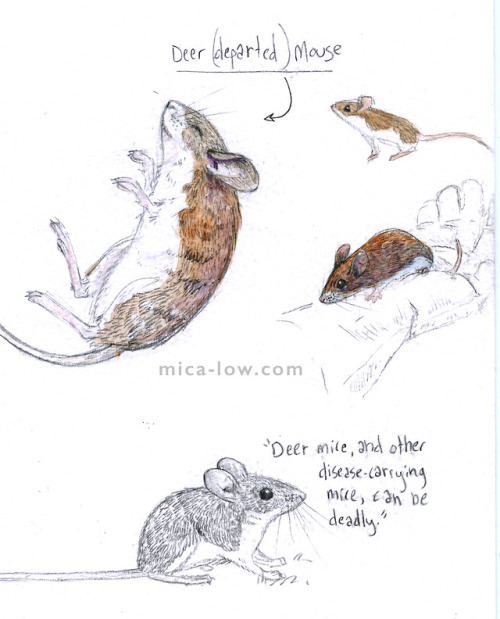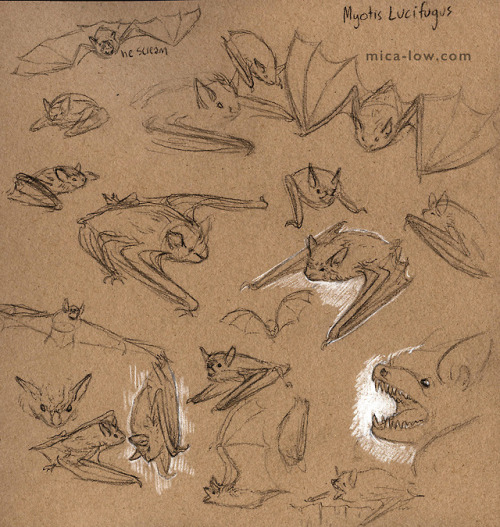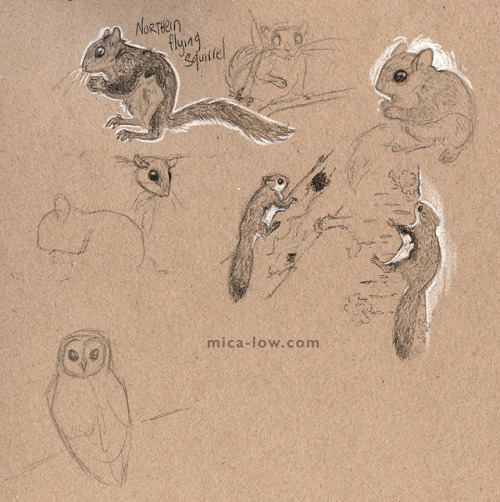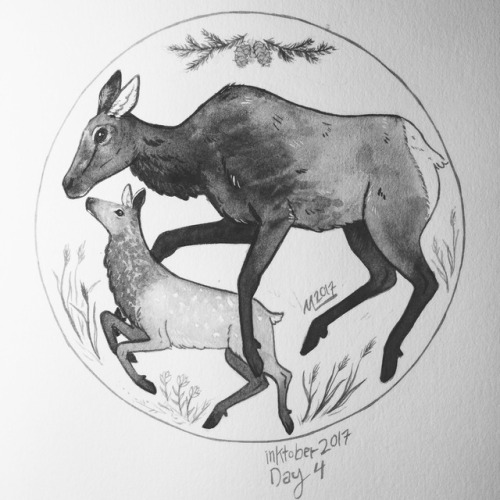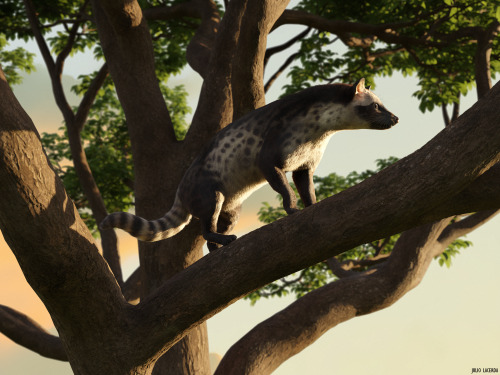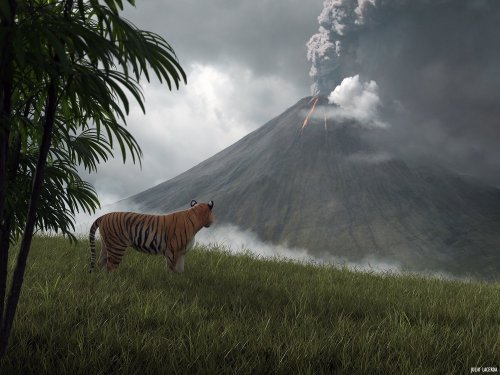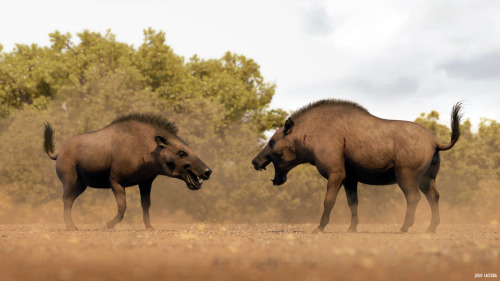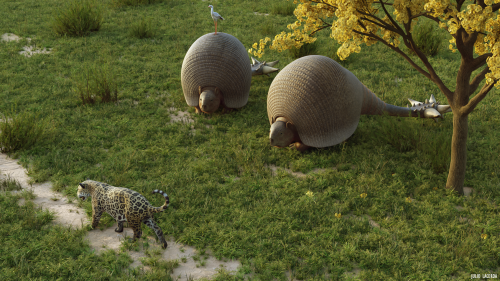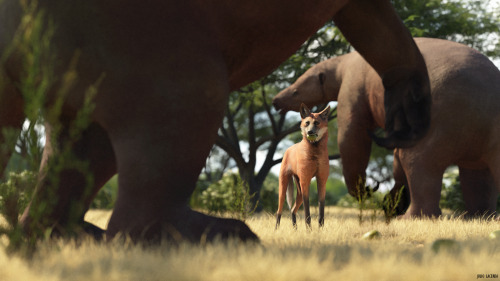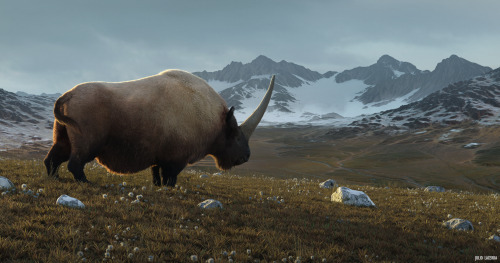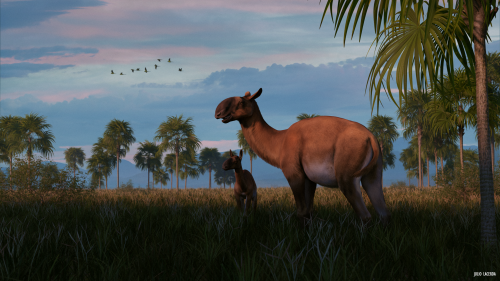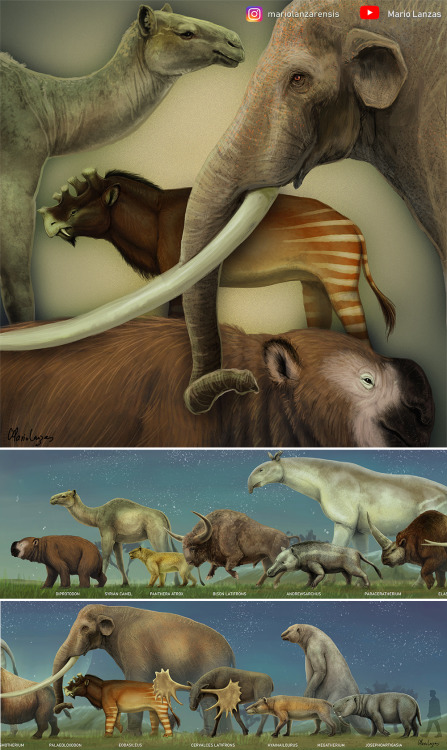#mammals
Selected sketchbook pages summer 2017-spring 2018, part 2- these are all preparatory studies for my master’s thesis, which you’ll see more of soon!
Post link
According to the Chinese calendar, 2022 is the Year of the Tiger.
Coincidentally, here’s something I made for PBS Eons a while back: a Sumatran tiger witnesses the massive eruption of the Toba volcano, which happened around 75,000 years ago in Indonesia. The event was so monumental that a lake (lake Toba) is what remains in the place where a mountain once stood.
Let’s hope our collective experience in 2022 is better than that tiger’s.
Patreon•Ko-fi•Facebook •Twitter•Prints & Merch
Post link
Just passing by.
Doedicurus clavicaudatus was a giant armadillo from central South America, with fossils being found in Brazil, Argentina and Uruguay. They reached an average weight of 1,400 kg, had spiked tail clubs and may have remained around until as recently as 7,000 years ago, meaning it certainly coexisted with both humans and other South American animals like the Jaguar and seriema.
Patreon•Ko-fi•Facebook •Twitter•Prints & Merch
Post link
“MOVE!”
Many people don’t know that, but there were once “elephants” in South America. Notiomastodon platensis was a gomphothere (elephant cousins) that lived throughout most of the continent except for higher altitudes. They disappeared after humans arrived in South America, around 10,000 years ago.
With many other large and impressive species, South America was a lot like Africa until very recently.
Patreon•Ko-fi•Facebook •Twitter•Prints & Merch
Post link
Toxodon was a strange, large mammal endemic to South America that went extinct only about 11,000 years ago. It superficially resembled hippos and (hornless) rhinos, and was in fact very distantly related to horses. Alongside this mamma and her calf are rheas and a termite mound, common features of central South America that remain to this day.
Patreon•Ko-fi•Facebook •Twitter•Prints & Merch
Post link
LARGEST MAMMALS OF EACH GROUP. Size comparison chart.
These and some more are featured on my Youtube video dedicated to the TOP Largest Mammals. This chart is now also available for prints and more at Redbubble
Post link
So, here’s the Master list of ALL of the fish explained posts, with links, common and scientific names, and the “extra” topics we covered, if any. The AC Fish Explained Series went on from April 6th, 2020 to March 2021! The series continued into the Museum Tour in June 2021. The series was started again for “fish past” in November 2021.
If you liked the fish/science posts, please let me know! It makes me so happy to hear that people learned stuff from these! Without further adieu, here they are:
#1Barreleye~*~ (Macropinna microstoma) ~*~ Science in Video Games
#2Sea Bass ~*~ Japanese Sea Bass (Lateolabrax japonicus) ~*~
& Black Bass ~*~ Largemouth Bass (Micropterus salmoides) ~*~ Problems With Common Names
#3Sturgeon ~*~ Atlantic sturgeon (Acipenser oxyrinchus oxyrinchus) ~*~ Fish Migration
#4Football Fish~*~ (Himantolophusspp.)~*~ Deep SeaSexLife
#5Goldfish// Popeye Goldfish//Ranchu Goldfish~*~ (Carassius auratus) ~*~ Goldfish Deserve Better#6Sea Butterfly ~*~ Common Clione (Clione limacina) ~*~ Problems with Common Names 2: Electric Boogaloo
#7Coelacanth ~*~ West Indian Ocean Coelacanth (Latimeria menadoensis) ~*~ Lazarus Species & Evolution of Tetrapods
#8Crawfish ~*~ Red Swamp Crayfish (Procambarus clarkii) ~*~ Invasive Species
#9Acanthostega ~*~ (Acanthostega gunnari) ~*~ Stem-Tetrapods
#10Killifish ~*~ Japanese Rice Fish (Oryzias latipes) ~*~ Endemism#11Oarfish ~*~ Giant Oarfish (Regalecus glesne) ~*~ Myths and Legends
#12Loach ~*~ Japanese Striped Loach (Cobitis biwae) ~*~ Barbels & Mouth Position in Fish
#13Clownfish ~*~ Ocellaris Clownfish (Amphiprion ocellaris) ~*~ Sequential Hermaphroditism
#14Surgeonfish ~*~ Regal Blue Tang (Paracanthurus hepatus) ~*~ The IUCN, Pet Trade
#15Koi ~*~ Amur Carp (Cyprinus rubrofuscus)subspecies ~*~ Aquaculture#16Manila Clam ~*~ Japanese littleneck clam (Ruditapes philippinarum) ~*~ Mollusks
#17Barred Knifejaw ~*~ Barred Knifejaw (Oplegnathus fasciatus) ~*~ Broadcast Spawning & Larvae Dispersal
#18Stringfish ~*~ Sakhalin Taimen (Parahucho perryi) ~*~ Anadromy & Osmolarity
#19Freshwater Goby ~*~ Dark Sleeper (Odontobutis obscura) ~*~ Motile Chromatophores
#20Ammonite~*~Ammonoidea spp. ~*~ Index Fossils#21Blue Marlin ~*~ Atlantic (Makaira nigricans) and/or Indo-Pacific (Makaira mazara) Blue Marlin ~*~ Apex Predators, Billfish Taxonomy
#22Giant Trevally ~*~ Giant Trevally (Caranx ignobilis) ~*~ Opportunistic Animals
#23Tuna ~*~ Bluefin Tuna (Thunnus spp) ~*~ Overfishing & Environmentally Sound Seafood
#24Mahi-Mahi ~*~ Mahi-Mahi (Coryphaena hippurus) ~*~ Meso-predators
#25 Opthalmosaurus~*~(Ophthalmosaurus icenicus) ~*~ Convergent Evolution#26Tadpole & Frog ~*~ Japanese Tree Frog (Dryophytes japonicus) ~*~ Metamorphosis
#27Plesiosaur~*~ (Futabasaurus suzukii) ~*~ Hydrodynamics of Long Necks
#28Archelon ~*~ (Archelon ischyros) ~*~ Eggs VS Live Birth
#29Snapping Turtle ~*~ Common Snapping Turtle (Chelydra serpentina) ~*~ Omnivores
#30Zebra Turkeyfish ~*~ Luna Lionfish (Pterois lunulata) ~*~ Venom, Invasive Lionfish#31Dace ~*~ Big-Scaled Redfin (Tribolodon hakonensis) ~*~ Acidic Water Tolerance
#32Carp ~*~ Common Carp (Cyprinus carpio) ~*~ 100 Most Invasive Species List
#33Bitterling ~*~ Rosy Bitterling (Rhodeus ocellatus) or Japanese Rosy Bitterling (Rhodeus smithii) or hybrid ~*~ Nomenclature
#34Crucian Carp ~*~ Crucian Carp (Carassius carassius) ~*~ Low Oxygen Adaptations
#35Cherry Salmon ~*~ Cherry/Masu Salmon (Oncorhynchus masou) ~*~ Semelparity VS Iteroparity
#36Anchovy ~*~ Japanese Anchovy (Engraulis japonicus) ~*~ Gills
#37Seahorse ~*~ Korean Sea Horse (Hippocampus haema) ~*~ Seahorses
#38Ribbon Eel ~*~ Ribbon Eel, (Rhinomuraena quaesita) ~*~ Sequential Hermaphroditism (Again)
#39Suckerfish ~*~ Common Remora (Remora remora) ~*~ Mutual Relationships
#40Neon Tetra ~*~ Neon Tetra (Paracheirodon innesi) ~*~ Neon Tetra in the Pet Trade#41Piranha ~*~ Red-bellied Piranha (Pygocentrus nattereri) ~*~ Bite Force
#42Arapaima ~*~ Arapaima/Pirarucu (Arapaima gigas) ~*~ Air-Breathing (Physostomes)
#43Pufferfish ~*~ Long-spine Porcupinefish (Diodon holocanthus) ~*~ Family Toxin
#44Ocean Sunfish ~*~ Ocean Sunfish (Mola mola) ~*~ Sunbathing fish
#45Spotted Garden Eel ~*~ Spotted Garden Eel (Heteroconger hassi) ~*~ Burrowing#46 Horseshoe Crab ~*~ Atlantic Horseshoe Crab (Limulus polyphemus) ~*~ Horseshoe Crabs Are Amazing
#47Moon Jellyfish ~*~ Moon Jellfyfish (Aurelia aurita) ~*~
& Sea Anemone ~*~ Magnificent Sea Anemone (Heteractis magnifica) ~*~ Cnidarians
#48Butterflyfish ~*~ Oriental Butterflyfish (Chaetodon auripes) ~*~ Monogamy
#49Great White Shark ~*~ Great White Shark (Carcharodon carcharias) ~*~ Functional Endothermy & Shark Attack
#50Whale Shark ~*~ Whale Shark (Rhincodon typus) ~*~ Filter-feeding#51Hammerhead Shark ~*~ Scalloped Hammerhead (Sphyrna lewini) ~*~ Evolution of the Hammerhead/Cephalofoil
#52Saw Shark ~*~ Japanese Saw Shark (Pristiophorus japonicus) ~*~ Saw Shark VS Sawfish
#53Shark Tooth Whorl~*~Helicoprion spp. ~*~ Chimeras
#54Dorado ~*~ Dorado (Salminus brasiliensis) ~*~ Protecting Species for Profit
#55Guppy ~*~ Guppy (Poecilia reticulata) ~*~ Sexual Dimorphism#56Angelfish ~*~ Freshwater Angel (Pterophyllum scalare) ~*~ Parental Care
#57Vampire Squid ~*~ Vampire Squid (Vampyroteuthis infernalis) ~*~ Oxygen Minimum Zone
#58Giant Isopod ~*~ (Bathynomus giganteus) ~*~ Deep-Sea Gigantism
#59Tilapia ~*~ Nile Tilapia (Oreochromis niloticus) ~*~ Aquaculture Issues
#60Pascal~*~ Asian Sea Otter (Enhydra lutris lutris) ~*~ Mom’s Fave Foods & Pascal the Philosopher#61Arowana ~*~ Asian Arowana (Scleropages formosus) ~*~ Species Definition
#62Sea Pineapple~*~ Sea Pineapple (Halocynthia roretzi) ~*~ Chordate Zoology
#63Gigas Giant Clam~*~ Tridacna gigas ~*~ Clam Myths
#64Horse Mackerel ~*~ Japanese Jack Mackerel (Trachurus japonicus) ~*~ Fisheries
#65Mantis Shrimp ~*~ Peacock Mantis Shrimp (Odontodactylus scyllarus) ~*~ Eyes#66Moray Eel ~*~ Kidako Moray Eel (Gymnothorax kidako) ~*~ Pharyngeal Jaws
#67Pale Chub ~*~Pale Chub (Zacco platypus) ~*~ Mate Choice
#68Hermit Crab ~*~ Passionfruit Hermit (Coenobita cavipes) ~*~ Vacancy Chain for Hermits
#69Squid ~*~ Bigfin Reef Squid (Sepioteuthis lessoniana) ~*~ Morphology
#70Ray ~*~ Red Stingray (Dasyatis akajei) ~*~ Batoids#71Napoleonfish ~*~ Humphead Wrasse (Cheilinus undulatus) ~*~ IUU Fishing
#72Scallop ~*~ Ezo Giant Scallop (Mizuhopecten yessoensis) ~*~ Swimming, Seeing Bivalves
#73Octopus~*~ California Two-Spot Octopus (Octopus bimaculoides) ~*~ Intelligence
#74Soft-shell Turtle ~*~ Chinese Soft-shell Turtle (Pelodiscus sinensis) ~*~ Evolution of Turtle Shells
#75Pondskater~*~Aquarius paludum ~*~ Surface Tension#76Myllokunmingia~*~ Myllokunmingia fengjiaoa ~*~ Cambrian Explosion
#77Gazami Crab ~*~ Gazami Crab (Portunus trituberculatus) ~*~ Swimming Crabs
#78Acorn Barnacle~*~ Balanus trigonus ~*~ Crustacean Diversity
#79Bluegill ~*~ Bluegill (Lepomis macrochirus) ~*~ Fish Tails
#80Tiger Prawn ~*~ Giant Tiger Prawn ( Penaeus monodon) ~*~ Crustacean Lifecycle & Nauplius#81Sea Grapes ~*~ Sea Grapes (Caulerpa lentillifera) ~*~ Algae
#82Giant Snakehead ~*~ Northern Snakehead (Channa argus) ~*~ Invasive Snakeheads
#83Spinosaurus~*~ Spinosaurus aegyptiacus ~*~ Swimming Dinosaurs
#84Umbrella Octopus ~*~ Flapjack Octopus (Opisthoteuthis californiana) ~*~ Oceanic Layers
#85Sea Slug~*~Hypselodoris festiva ~*~ Nudibranchs#86Salmon ~*~ Chum Salmon (Oncorhynchus keta) ~*~ The Changing Salmon
#87Char ~*~ White-Spotted Char (Salvelinusleucomaenis) ~*~ Problem with Dams
#88Golden Trout ~*~ California Golden Trout (Oncorhynchus mykissaguabonita) ~*~ Rainbow Trout Subspecies
#89King Salmon ~*~ Chinook Salmon (Oncorhynchus tshawytscha) ~*~ Site Fidelity
#90Pearl Oyster ~*~ Akoya Pearl Oyster (Pinctada imbricata fucata) ~*~ Pearl Formation#91Chambered Nautilus ~*~ Chambered Nautilus (Nautilus pompilius) ~*~ Vertical Migration
#92Gar ~*~Spotted Gar (Lepisosteus oculatus) ~*~ Holostei Fish
#93Flatworm~*~Pseudoceros bimarginatus ~*~ About Flatworms
#94Diving Beetle~*~ Cybister chinensis ~*~ How Insects Breathe
#95Giant Water Bug~*~Lethocerus deyrollei ~*~ Bite of the Toe Biter#96Sea Urchin ~*~ Purple Sea Urchin (Paracentrotus lividus) ~*~ Biological Symmetry
#97Yellow Perch ~*~ Yellow Perch (Perca flavescens) ~*~ Cannibalism
#98Oyster ~*~ Pacific Oyster (Crassostrea gigas) ~*~ Oyster Reefs
#99Catfish ~*~ Amur Catfish (Silurus asotus) ~*~ Catfish are Ridiculous
#100Dunkleosteus~*~Dunkleosteus terrelli ~*~ Placoderms#101Rainbowfish ~*~ Ornate Rainbowfish (Rhadinocentrus ornatus) ~*~ Endemism (Again)
#102Slate Pencil Urchin ~*~ Red Slate Pencil Urchin (Heterocentrotusmamillatus) ~*~ Urchin Spines
#103Saddled Bichir ~*~ Saddled Bichir (Polypterus endlicheri) ~*~ Synapomorphy
#104Nibble Fish ~*~ Doctor Fish (Garra rufa) ~*~ Ichthyotherapy
#105Sweetfish ~*~ Ayu (Plecoglossus altivelis) ~*~ Traditional Cormorant Fishing#106Sweet Shrimp ~*~ Amaebi (Pandalus eous) ~*~ Shrimp Taxonomy
#107Anomalocaris~*~Anomalocaris canadensis ~*~ Radiodontids
#108Venus’ Flower Basket ~*~ Venus’ Flower Basket (Euplectella aspergillum) ~*~ Sponges
#109Sea Cucumber ~*~ Japanese Spiky Sea Cucumber (Apostichopus japonicus) ~*~ Sea Cucumbers
#110Olive Flounder ~*~ Olive Flounder (Paralichthys olivaceus) ~*~ Flatfish Lesson 1
#111Dab ~*~ Alaska Plaice (Pleuronectes quadrituberculatus) ~*~ Flatfish Lesson 2
#112Mitten Crab ~*~ Chinese Mitten Crab (Eriocheir sinensis) ~*~ What Is a Crab?
#113Snow Crab ~*~ Snow Crab (Chionoecetes opilio) ~*~ Japanese Names
#114Dungeness Crab ~*~ Dungeness Crab (Metacarcinus magister) ~*~ Ocean Acidification
#115Red King Crab~*~ Red King Crab (Paralithodes camtschaticus) ~*~ Imposter Crab#116Red Snapper ~*~ Northern Red Snapper (Lutjanus campechanus) ~*~ Longevity
#117Turban Shell ~*~ Horned Turban Snail (Turbo cornutus) ~*~ Snails
#118Trilobite~*~Cheirurus spp. ~*~ How Fossils Form
#119Whelk ~*~ Common Whelk (Buccinum undatum) ~*~ Predatory Snails
#120Sea Star ~*~ Brick Red Sea Star (Anthaster valvulatus) ~*~ All About Sea Stars#121Seaweed ~*~ Wakame (Undaria pinnatifida) ~*~ More Algae
#122Sea Pig ~*~ Sea Pig (Scotoplanes globosa) ~*~ Dueterostomes and Protostomes
#123Pike ~*~ Northern Pike (Esox lucius) ~*~ Aggression
#124Mussel ~*~ Bay Mussel (Mytilus trossulus) ~*~ Ecosystem Services
#125Abalone ~*~ Black Abalone (Haliotis cracherodii) ~*~ Biomimicry#126Pond Smelt ~*~ Wakasagi (Hypomesus nipponensis) ~*~ Ice Fishing
#127Spiny Lobster ~*~ Japanese Spiny Lobster (Panulirus japonicus) ~*~ Lobster Imposter
#128Lobster ~*~ American Lobster (Homarus americanus) ~*~ Immortality
#129Coconuts~*~ Coconut Palm (Cocos nucifera) ~*~ Unorthodox Seed Dispersal
#130Betta ~*~ Betta/Siamese Fighting Fish (Betta splendens) ~*~ Labyrinth Fish
#131Blowfish ~*~ Fine Patterned Puffer (Takifugu poecilonotus) ~*~ Preparing Toxic Fugu
#132Gulliver/Gullivarrr ~*~ Black-tailed Gull (Larus crassirostris) ~*~ Seabirds
#133Eusthenopteron~*~ Eusthenopteron foordi ~*~ You’re a Fish
#134Octopus Villager~*~Octopus spp. ~*~ Anatomy of an Octopus
#135Spider Crab ~*~ Japanese Spider Crab (Macrocheira kaempferi) ~*~ Big Animals in the Oceans#136Beach Shells ~*~ multiple spp. ~*~ General About Spp.
#137Penguin Villager~*~Sphenisciformes spp. ~*~ Penguins!
#138Firefly Squid ~*~ Firefly Squid (Watasenia scintillans) ~*~ Bioluminescence
#139Wardell ~*~ West Indian Manatee (Trichechus manatus) ~*~ Sirenia, the Manatees and Dugong
#140Lyle & Lottie ~*~ Japanese River Otter (Lutra nippon) ~*~ Extinct River Otters#141Spring Mackerel ~*~ Japanese Spanish Mackerel (Scomberomorus niphonius) ~*~ Scombrid Fish
#142Moorish Idol ~*~ Moorish Idol (Zanclus cornutus) ~*~ Fish in Culture
#143Barbel Steed ~*~ Barbel Steed (Hemibarbus labeo) ~*~ More F’n Cyprinids
#144Nomura’s Jellyfish ~*~ Nomura’s Jelly (Nemopilema nomurai) ~*~ Native Invader
#145Frog Villager~*~Anura spp. ~*~ Frogs vs Toads
#146Flying Fish ~*~ Bennet’s Flying Fish (Cheilopogon pinnatibarbatus) ~*~ How They Fly
#147Pineapple Fish ~*~ Japanese Pineapple Fish (Monocentris japonica) ~*~ Armor
#148Eel ~*~ Japanese Eel (Anguilla japonica) ~*~ Catadromous Lifestyle
#149Sea Bunny ~*~ Sea Bunny (Jorunna parva) ~*~ The Fuzz is a Lie
#150Hippo Villager~*~ Common Hippo, (Hippopotamus amphibius) ~*~ Hippos#151Largehead Hairtail ~*~ Largehead Hairtail (Trichiurus lepturus) ~*~ Species Complex Confusion
#152Lumpfish ~*~ Balloon Lumpfish (Eumicrotremus pacificus) ~*~ Suction
#153Giant Catfish ~*~ Giant Lake Biwa Catfish (Silurus biwaensis) ~*~ Earthquake Fish
#154Kapp’n ~*~ Kappa ~*~ The Legend of the Kappa
#155 Achilles Surgeonfish ~*~ Achilles Tang (Acanthurus achilles) ~*~ A Fish’s Achilles’ Heel
#156 Comb Jelly & Northern Comb Jelly~*~Ctenophore spp. ~*~ Ctenophores Are Not Jellyfish
#157 Flora ~*~ American Flamingo (Phoenicopterus ruber) ~*~ Flamingos!
#158 Red Sea Bream ~*~ Madai (Pagrus major) ~*~ Seasonal Luxury
#159 Goliath Frog ~*~ Goliath Frog (Conraua goliath) ~*~ Biggest Frog!
#160Bering Wolffish ~*~ Bering Wolffish (Anarhichas orientalis) ~*~ Wolffish
#161Bicolor Dottyback ~*~ Bicolor Dottyback (Pictichromis paccagnella) ~*~ Incertae sedis
#162Zebra Moray ~*~ Zebra Moray (Gymnomuraena zebra) ~*~ More Morays
#163Vampire Crab~*~ (Geosesarma dennerle) ~*~ TFW the Pet Trade Discovers Things Faster Than Science
#164Phineas ~*~ Japanese Sea Lion (Zalophus japonicus) ~*~ Seals vs Sea Lions
#165Amberjack~*~ Japanese Amberjack (Seriola quinqueradiata) ~*~ Farmed Predators#166Sakura Shrimp ~*~ Sakura Shrimp (Sergia lucens) ~*~ Actually Prawns
#167Black Ghost Knifefish ~*~ Black Ghost Knifefish (Apteronotus albifrons) ~*~ It’s Electric!
#168Black Clownfish ~*~ Ocellaris Clownfish - AGAIN! (Amphiprion ocellaris) ~*~ Polymorphism
#169Pink Anemonefish ~*~ Pink Skunk Clownfish (Amphiprion perideraion) ~*~ Mutuals with an Anemone
#170Wakin Goldfish ~*~ Goldfish (Carassius auratus) ~*~ Mutants
#171Skipjack Tuna ~*~ Skipjack Tuna (Katsuwonus pelamis) ~*~ Pollution? In my seafood? More likely than you think!
#172Yellowfin Tuna ~*~ Yellowfin Tuna (Thunnus albacares) ~*~ Associations
#173Tiger Catfish ~*~ Tiger Shovelnose Catfish (Pseudoplatystoma spp.) ~*~ Diverse Cats
#174Great Barracuda ~*~ Great Barracuda (Sphyraena barracuda) ~*~ Unique Predatory Methods
#175Atlantic Mackerel ~*~ Atlantic Mackerel (Scomber scombrus) ~*~ Being a Living Trawl Net#176Wendell ~*~ Walrus (Odobenus rosmarus) ~*~ Walrus!
#177Pacific Saury ~*~ Pacific Saury (Cololabis saira) ~*~ Seasonal Migration
#178Spotted Knifejaw ~*~ Spotted Knifejaw (Oplegnathus punctatus) ~*~ Range Expansion
#179Discus ~*~ Discus (Symphysodon discus) ~*~ Parenting like a Mammal
#180Harlequin Shrimp ~*~ Harlequin Shrimp (Hymenocera picta) ~*~ Tiny knights killing monsters~~The Museum Tour - Habitats~~
#1Open Ocean
#2Nearshore
#3Coral Reefs
#4Estuary
#5Rivers
#6Lakes and Ponds
#7Wetlands
#8Aquarium Hobby Tank
#9Polar Regions
#10The Abyss
This is the second in a series of posts about how to build your own species of a particular group of animals or plants. As other articles are written for this series, they will appear under “How to Build…” under the resources section of this blog.
If you’re brainstorming a new world, you’re probably inclined to include animals that are at least a little similar to Earth’s animals, even if your world isn’t Earth at all. Usually you see some sort of mammal in fantasy world, and your story will be all the richer if you make some of your own. Click the read-more, and we’ll begin!
First of all, what is a mammal?
The following characteristics make an animal a mammal:
- Vertebrate (has a spine)
- Warm-blooded (generates its own heat)
- Hair/fur
- Three middle ear bones
- Mammary glands (glands that produce milk, hence the name)
- Possess a neocortex (a region of the brain reptiles and birds don’t have)
- Four chambered heart
- Give birth to live young (except in the case of monotremes, which are egg-laying mammals such as the platypus. There are only five species of these though)
That’s the basics of it, and although they share these traits, there is huge diversity among mammals on Earth. Just think about it - an elephant and a mouse are both mammals, but they are still wildly different. You can be really creative when you brainstorm a mammal, because they are one of the most diverse animal groups. So, what can vary among mammals, and how?
Size and Metabolism
As you probably already know, mammals can vary wildly in size. It’s important to keep in mind, though, that the bigger the animal is, the more it will need to eat. The African elephant, one of the biggest mammals on Earth, can eat up to 200-600 pounds a day. In comparison, a rabbit is not going to eat nearly that much.
Habitat also is a factor when considering size, at least on the larger end. Mammals can get fairly large on land, but they can be even larger in the water, because the buoyancy of the water supports spinal structures that otherwise couldn’t withstand the full force of gravity on land.
Also, the bigger an animal is, the slower a metabolism it will have. Smaller animals have very fast metabolisms (they have to work harder to generate more heat). This occurs because the surface area to volume ratio increases as the animal gets smaller. Because smaller animals have more surface area relative to their mass, they lose heat faster, and therefore have to work harder to generate it. The faster the metabolism, the faster the heartbeat, and the animal will likely seem more hyperactive/energetic too.
Hair/Fur and Thermoregulation
Animals can range from being nearly hairless like humans, to possessing fur of Chewbacca proportions. This generally depends on habitat (humans developed in a very warm area first, so they didn’t need fur. When we moved to colder areas, we had a level of intelligence that allowed us to make clothes to help). The hotter the area, the less fur a mammal is going to have, since hair/fur is primarily for thermoregulation.
If an animal does have fur in a hot area (like a jackrabbit), it will need a way to shed excess heat. In the case of rodents/rabbits that live in the desert, they tend to have huge ears with lots of blood vessels and minimal fur, which allow the heat to dissipate through the ears’ large surface area. Some animals like dogs and other canines will pant to release heat from their tongues. In the case of cats, furless areas in addition to the ears, such as paw pads and the nose, help to release heat. Basically, if you are going to brainstorm a furry animal in a hot area, it’s the most realistic if the fur is short, and if it has a way to prevent itself from overheating.
In contrast, an animal that lives in a cold area will likely have thick fur. Sometimes, there will be multiple layers of fur. Down-like fur that is softer tends to be closer to the skin, and coarser fur is closer to the outside. In extremely cold areas, a mammal may also have a layer of thick fat called blubber to keep itself warm. This is often the case with arctic marine mammals. In the case of some whales, they often only have blubber, and don’t possess fur other than a few whiskers or sparse hair.
Whiskers
Speaking of whiskers, not all hair-like structures on mammals are used for thermoregulation. Also called vibrissae, whiskers are specialized hairs that animals used to help interpret the environment around them. They possess a connection to the brain, and can pick up sensory data the animal otherwise wouldn’t be able to receive (vibrations in air/water, physical objects close by, etc). Whiskers can grow in many different places on animals, but are usually on the face. All animals, including primates, possess functional whiskers, except humans (sadly, a beard and mustache cannot pick up sensory vibrations).
Feet
The kind of feet a mammal has depends on what kind of mammals they are. Ungulates have hooves. Hooves are basically like enhanced toenails - they are surrounded by a thick layer of keratin. They are often worn down by running, which ungulates do a lot of (since they tend to be prey mammals).
Most other mammals have claws, which can be used for attacking, tearing apart food, or digging. How big/sharp the claw is depends on what it’s used for. A fine, sharp claw like a cat has wouldn’t be very practical for an animal like a badger, which digs heavily. Badger claws are blunt and tough, whereas cat claws are sharper and meant for tearing apart flesh.
Marine mammals, of course, tend to have fins. Some, like otters, have claws, but the less time the animal spends on land, the less likely it is to have claws. Mammals that live primarily in the water tend to use their teeth for attacking instead.
In the case of primates, their extremities tend to be closer to hands and feet (since that is what humans have, after all). The nails on their hands and feet can grow sharp enough to be claws in some species, but in humans, they are generally not that tough and serve more of an ornamental feature nowadays.
Diet
Generally, mammals eat plant matter (herbivorous) or other animal matter (carnivorous). If they eat only insects, such as the anteater, they are insectivorous. Some mammals, like humans, can eat both plants and animals (omnivores).
Herbivorous animals are the lowest mammals on the food chain, and eat plants directly. Because plant matter is tough to digest (plant cell walls contain cellulose, a tough, fibrous material), herbivorous mammals usually have flat teeth to help grind plant material. They often have multiple stomachs to help digest plant matter completely.
Omnivores, which can eat both animal and plant matter, can digest plant matter, but not as well as herbivores can. In the case of humans, we only have one stomach, and it can’t digest all kinds of plant matter, just some. This is why things like celery strings and the tougher parts of vegetables sometimes don’t get digested. For the rest of their nutritional needs, omnivores tend to eat animal matter as well. An omnivore can survive on only plant matter with the right forethought (vegetarians/vegans are an example of this), but this is most common in humans. If you are brainstorming another sentient mammal species that can consider these things, though, having them be vegetarian despite being omnivores is perfectly plausible, though.
Carnivores are animals that can’t digest plant matter at all (please, please never feed your cat a solely plant diet for this reason. They are carnivores and need meat). They rely on herbivores to break down the carbohydrates that plants produced via photosynthesis, and then they eat the herbivores (or other carnivores) to gain the nutrition they need. Carnivores tend to have sharp teeth that assist in tearing flesh of other animals to break it down.
Some carnivores, like the anteater, are specialized insectivores. They often have specialized mouths for hunting insects. For instance, anteaters have long snouts that can poke into insect tunnels, and they also possess long, thin tongues that can scoop the insects out. Since they don’t need to tear the insects apart, they don’t have teeth, and they use their sharp claws to break apart ant and termite mounds instead (and for defense).
Reproduction and Birth
Aside from egg-laying mammals such as echidnas and platypuses, mammals generally give birth to live young. Animals engage in sexual reproduction, and the female of the species becomes pregnant and gestates the young until it’s ready to be born. Gestation periods vary among mammals, but the longer it stays in the womb, the more developed the baby will be.
Some animals are born more independent than others, and this varies on the species. Ungulates (hoofed mammals) can often run and walk soon after birth, but the giant panda is born tiny and helpless, and needs a lot of protection after birth before it’s able to move around on its own. Animals that are more likely to be preyed upon tend to be more independent upon birth, to increase their chances of survival. If a mother wild horse had to carry its foal around because it was unable to walk, they would both be at a disadvantage, and a carnivorous predator could pick them off much more easily.
Mammals also possess mammary glands, which produce milk to feed their young. Even if the animal can walk shortly after birth, it usually stays with its mother to take advantage of this. Milk provides nutrients, and it assists the new baby’s immune system by carrying antibodies from the mother to help protect against illness.
Behavior/Social Structure
Mammals vary wildly when it comes to social structure, just like birds do. They can range from being completely solitary to forming huge groups, so any level of sociability is plausible for a mammal. There are pros and cons to different sociability levels.
Pros of Groups
- Protection from predators (safer in numbers)
- Assistance with care of young
Cons of Groups
- Must share resources (groups function better when there are abundant resources)
- More visible (predators will be attracted to large groups of prey animals)
A lot of prey animals form groups, but not all do. Sometimes it’s safer to be solitary and have other defense mechanisms against predators, like staying hidden and minding your own business. Most larger predators do not form groups (with some exceptions like lions), because otherwise, they would have to share prey, and all the effort that went toward a kill wouldn’t have a decent payoff anymore.
Pros of Solitary
- Easier to hide
- Don’t need to share
- Can establish a territory (which can be important re: reproduction. Keeping others of your same sex out of your area increases an animal’s ability to mate with the opposite sex)
Cons of Solitary
- You’re all on your own in this, pal
- Nothing else around to distract predators
- No assistance with care of young
Mammals can also have very simple social structure (i.e. hanging around in a group for protection reasons), or they can have complex, family-like structures. Family-like social structures tend to be seen in more intelligent animals like primates and cetaceans (whales/dolphins) where multiple generations of the same family tend to hang around together and help each other out. This is called “kin selection.” It is thought that by helping relatives survive, an animal helps to ensure that its genes, or genes closely related to it, are the ones that survive into future generations.
Courtship
The last thing to think about when creating a mammal species is courtship and mating. This varies wildly among mammal species, and some processes are more flamboyant displays than others.
Usually, though, an animal that wishes to mate will display certain behaviors that are meant to attract the opposite sex. Mammals can also give off pheromones that signal that the animal is ready to mate, and other mammals of that species will be able to pick up on the pheromones.
Often, males of a species will fight to try and impress an individual it wishes to mate with. It’s not always males who do this, but that is what’s most common among Earth mammals. Ungulates are especially noted for doing this, often fighting with their antlers (if they have them). Often, a group of females (or just one) will watch a group of males fight, and will choose the one she wants to mate with.
If an individual animal is choosing who it wants to mate with, it can decide based on a number of factors:
- Who wins the fight
- Who looks the healthiest
- Who has the biggest antlers/mane/other trait designed to attract mates
- Gifts given/who is best at finding food
- Who has been able to push all other contenders out of their territory
All of this should hopefully give you a good place to start when you’re designing a mammal species! By no means is it everything, but it’s a good start. Good luck, and happy worldbuilding!

